Andrew Birkbeck
Reviews By Author
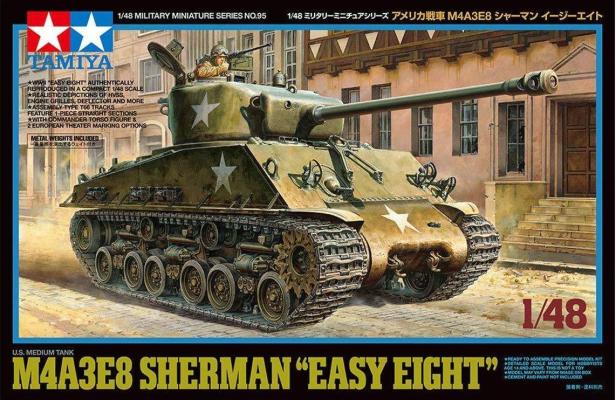
|
M4A3E8 ShermanPublished:
BackgroundOne can put up a legitimate argument that the M4 Sherman series of tanks was the most important Allied tank of the Second World War. The initial Shermans that rolled off the production lines in large numbers had what was known as VVSS (Vertical Volute Suspension System) with two road wheels per bogie. These tanks (M4, M4A1, M4A2, M4A3, M4A4) also operated as their main armament a short-barreled 75mm gun. As WW2 progressed, and reports from the fields of battle suggested the need for various “upgrades”, the Sherman series underwent a number of small and major changes. Late in the war, there were two major changes: the introduction of HVSS (Horizontal Volute Suspension System) which incorporated four road wheels per bogie for a better vehicle ride, together with a… more |
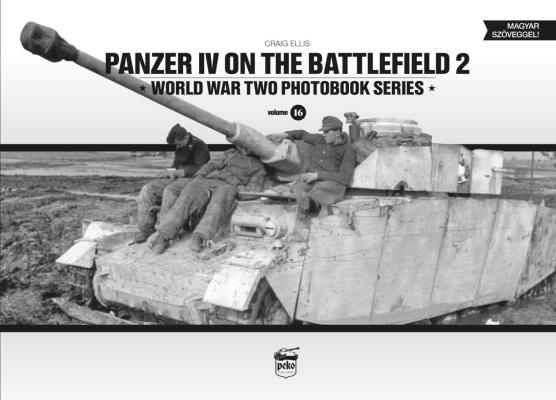
|
Panzer IV On The Battlefield 2Published:
Around 1970, Monogram Models released a “Panzer IV” kit in 1/32nd scale. There was no mention on the box top as to what version (Ausführung) it was, simply that it was a Panzer IV “with 75mm gun”. As military vehicle historians dug deeper into the history of German military vehicles from the Second World War period, they learned that the Panzer IV, for example, was produced in a series of “Ausführung”, or versions: Ausf. A, Ausf. B etc. Eventually, model firms figured this out too so that by the early/ mid-1970’s, Italeri was producing kits such as their “German Tank Pz.Kpfw. IV Ausf (H)” while Tamiya had their “Panzerkampfwagen IV Ausf. H”. As historians dug deeper into the records, it was discovered that within a series run, changes on the tank manufacturing lines produced… more |
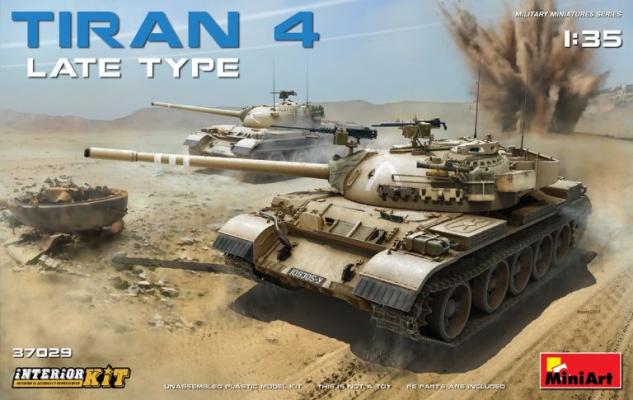
|
Tiran 4 Late TypePublished:
BackgroundThe most important Soviet tank design of the early post WW2 period was the T-54/T-55 series of tanks, and these tanks were exported in large numbers to Soviet client states including Syria and Egypt. The 1967 and 1973 Arab/Israeli wars were disastrous for the combined Arab armies, and Israeli forces captured hundreds of intact examples of the T-54/55 tanks. Not wishing to look a gift horse in the mouth, the Israeli military developed a procurement program designed to put these captured tanks back into Israeli service. Over the years the Israeli Defense Forces (IDF) fielded the Tiran 1, 2, 4 and 5. The Tiran 1 was an unmodified T-54, and the Tiran 2 was an unmodified T-55. The Tiran 4 was a modified T-54 with new jerry can and stowage boxes added to the exterior of… more |
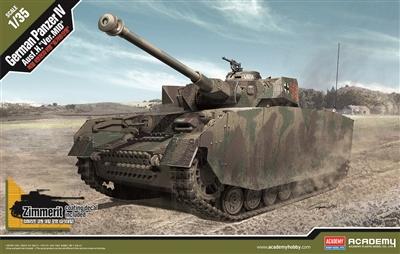
|
Panzer IV Ausf. H Mid Production w/ZimmeritPublished:
The Panzer IV series of medium tanks was the only German tank to see continuous production throughout the Second World War. As battlefield conditions changed for the Germans during the war, so too did the Panzer IV: thicker armor, more powerful main guns, the introduction of spaced “schurzen” turret and hull armor plates. The modeler has been fairly well served over the years when it comes to Panzer IV kits in all the main scales. In 1/35th scale, Tamiya, Italeri, Dragon, Gunze Sangyo, Zvezda and Academy themselves have all done various versions of the Panzer IV in their catalogs. Academy, in fact, did a couple of Panzer IV Ausf H’s way back in 1984. The kit under review in this article has NOTHING in common with the 1984 releases. Not only is it from 100%… more |
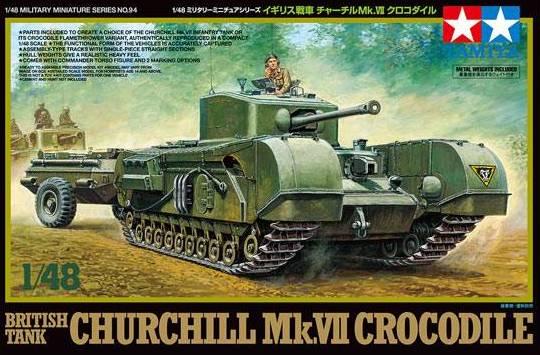
|
British Tank Churchill Mk.VII - CrocodilePublished:
BackgroundThe British Churchill tank was one of the most important tank designs introduced by the British after the start of the Second World War. Following the collapse of the French armies at the hands of the invading Germans utilizing Blitzkrieg tactics, British forces lost most of their front line military equipment in France in May 1940. The British reevaluated their previous views on the purposes and uses of tanks following these losses, and came up with more modern designs, the Churchill tank being a prime example. It was heavily armored, and with the introduction in 1943 of the Mk.VII, better armed, sporting as it did a 75mm main gun capable of firing both high explosive and armor piercing rounds. In preparation for the D-Day Invasion in June 1944, various “… more |
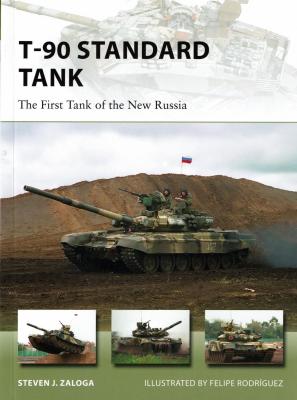
|
T-90 Standard Tank: The First Tank of the New RussiaPublished:
BackgroundThe T-90 “Standard Tank” was an evolutionary development of the Soviet T-72 tank, the latter being a prime component of Soviet tank forces during the mid-1970’s to the mid 1990’s. The T-72 was also exported widely, including to the armed forces of Saddam Hussein’s Iraq. During the 1991 Gulf War, the Iraqi T-72 tanks suffered very badly against such tanks as the U.S. M1 Abrams. Whether this was due to the T-72 being notably inferior to the West’s main battle tanks or poor training and tactics on the part of the Iraqis is irrelevant: the perception in many nations following the 1991 war was that the Soviet tank was inferior. Thus, there was pressure within the Russian military-industrial complex to get rid of the “T-72” name. Hence naming the first tank… more |
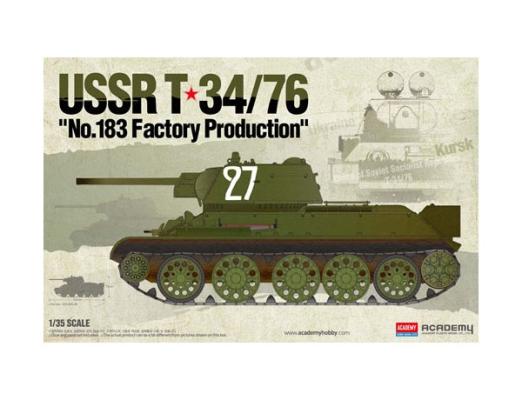
|
T-34/76 Factory 183Published:
BackgroundI won’t go heavily into the background of the Russian T-34 tank, suffice to say that it is a VERY strong contender for “the tank that won the war”. Certainly, this was so on the Eastern Front of World War Two. It was well suited for the climatic conditions found on this battlefront, with its harsh winters and “muddy season”. Its diesel engine was easier to start in cold conditions than the gasoline engines preferred by the Germans, and its wide tracks allowed it to better handle the muddy and marshy conditions found in much of Russia. It had well-sloped armor that at least in the early days of Operation Barbarossa proved a very tough nut for German anti-tank gunners to crack. And it’s 76 and later 85mm main gun was quite capable of defeating the armor of most… more |
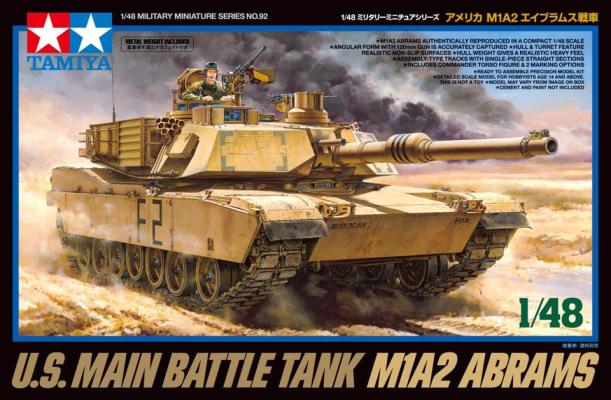
|
M1A2 Abrams U.S. Main Battle TankPublished:
BackgroundThe M1 Abrams, named for former General Creighton Abrams (commanded US troops in Vietnam following General Westmoreland, and later became US Army Chief of Staff), is the current front line Main Battle Tank of the US Army and US Marine Corps. It also serves in the Armed Forces of nations such as Australia, Egypt, Iraq, and Saudi Arabia. It first entered service with US forces in 1980 and has over the years since been upgraded with various enhancements, especially as battle conditions in which it finds itself have changed from a tank vs tank to “urban combat” situations. What’s in the Tamiya Box
|
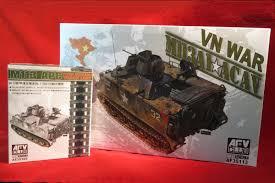
|
U.S. M113A1 ACAVPublished:
BackgroundAs a young man in the late 1960’s living in Canada, each weekday night I used to watch “The CBS Evening News” with Walter Cronkite. This was my window on the world, so to speak. And it seemed that almost every night the first thing that I saw through this window involved “the war in Vietnam”. Mr. Cronkite would tell me how many US troops had been killed or wounded, and then I would see a video clip from a correspondent in Saigon, or in some rice paddy somewhere in the countryside. Vietnam, I thought, was a place I didn’t EVER want to visit. Often in the background of the television videos, there were TWO objects regularly seemed to appear at some point during the newscast. One was a helicopter, often many, and the other was an M113 APC. These apparently, were the… more |
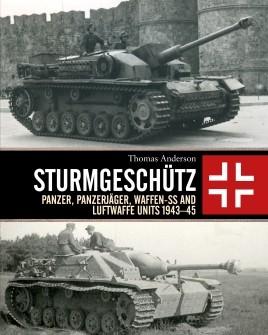
|
SturmgeschutzPublished:
Initially deployed with German forces in 1940, Sturmgeschütz (Stug) assault guns were purpose-built fully tracked armored fighting vehicles designed to support the infantry during the initial assault on enemy positions, especially useful for knocking out strong points such as bunkers. When the Germans invaded Russia in 1941 in Operation Barbarossa, they got a nasty surprise with the appearance on the battle field of heavily armed and armored Soviet tanks such as the T-34/76 and KV-1. The Stug assault guns were discovered to be excellent tank destroyers. They were quicker and cheaper to produce than tanks, making them a good “bargain” on the battlefield. As the war progressed, the Stug was up-gunned to deal with ever more lethal Soviet tanks, and spread across the battle fields as… more |
